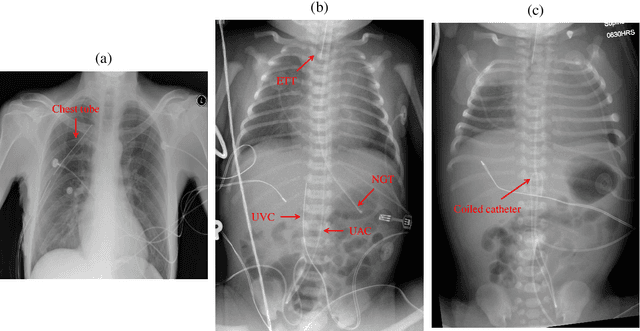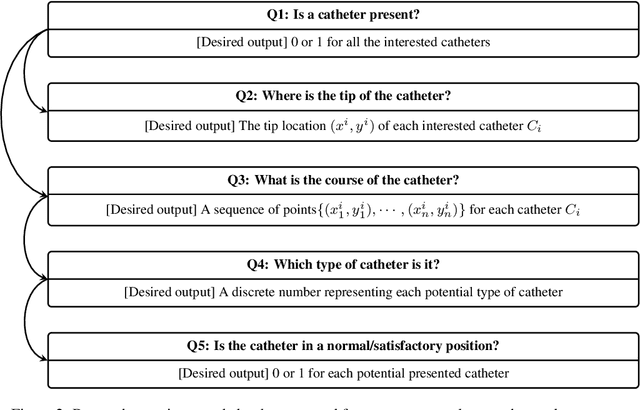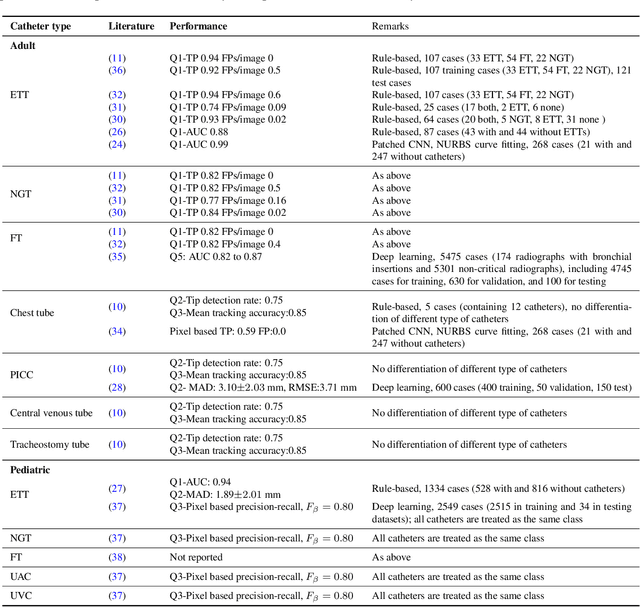Computer-Aided Assessment of Catheters and Tubes on Radiographs: How Good is Artificial Intelligence for Assessment?
Paper and Code
Feb 09, 2020



Catheters are the second most common abnormal finding on radiographs. The position of catheters must be assessed on all radiographs, as serious complications can arise if catheters are malpositioned. However, due to the large number of radiographs performed each day, there can be substantial delays between the time a radiograph is performed and when it is interpreted by a radiologist. Computer-aided approaches hold the potential to assist in prioritizing radiographs with potentially malpositioned catheters for interpretation and automatically insert text indicating the placement of catheters in radiology reports, thereby improving radiologists' efficiency. After 50 years of research in computer-aided diagnosis, there is still a paucity of study in this area. With the development of deep learning approaches, the problem of catheter assessment is far more solvable. Therefore, we have performed a review of current algorithms and identified key challenges in building a reliable computer-aided diagnosis system for assessment of catheters on radiographs. This review may serve to further the development of machine learning approaches for this important use case.
 Add to Chrome
Add to Chrome Add to Firefox
Add to Firefox Add to Edge
Add to Edge